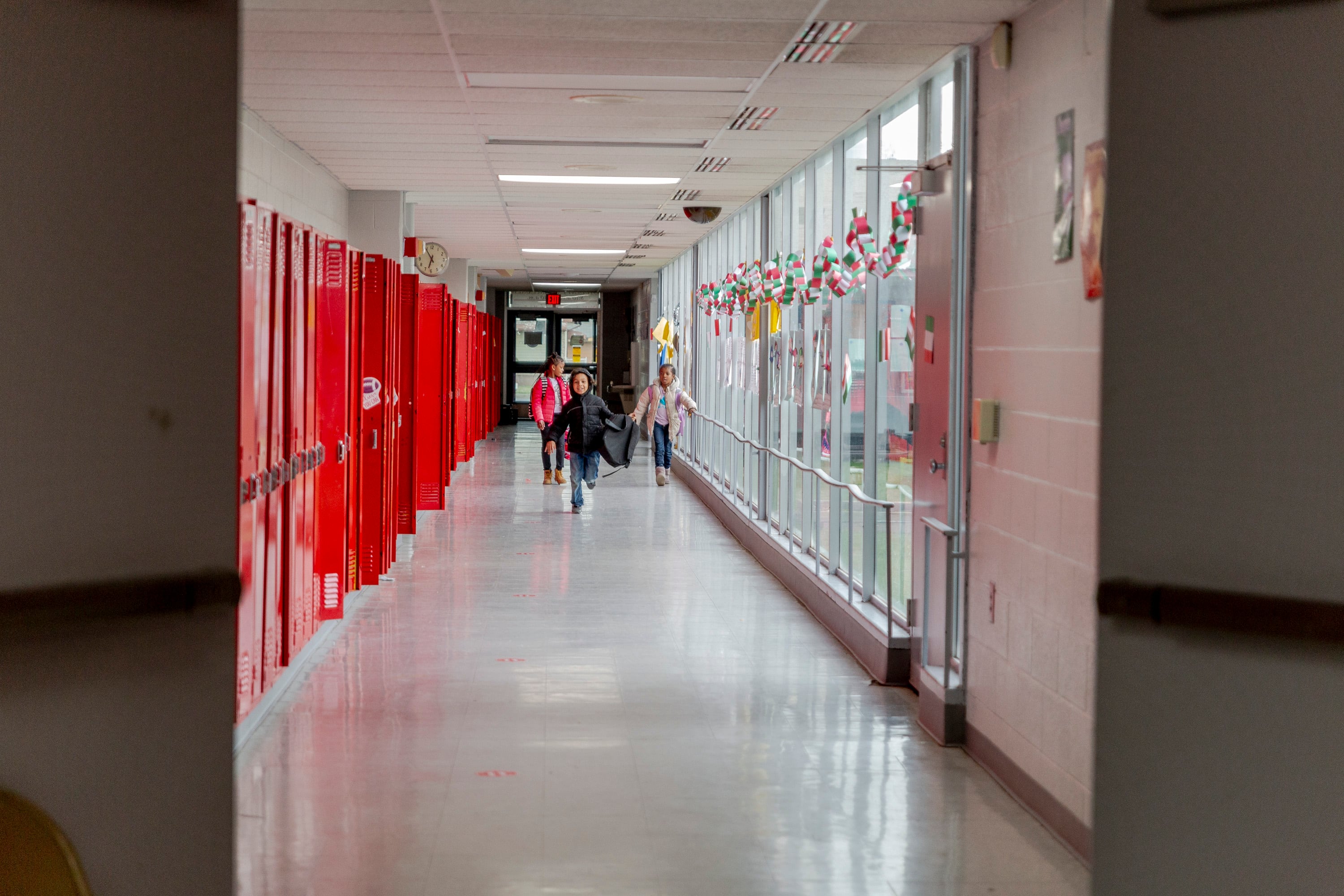Detroit school district officials are planning more aggressive steps to reverse a rise in chronic absenteeism, a huge obstacle to their efforts to help students recover academically from the impact of the pandemic.
The measures are aimed at bolstering an attendance plan that was showing some success in reducing chronic absenteeism rates before the pandemic struck. They involve broadening the circle of district and school officials with responsibility for monitoring student attendance, using data to understand the “challenges that prevent school attendance and then working to resolve those concerns as a team,” Superintendent Nikolai Vitti said.
The district can’t move forward in its academic recovery efforts if students don’t consistently attend school, Vitti said, because “chronic absenteeism directly impacts districtwide and school level enrollment, which impacts funding and student achievement.”
In the latest school year, 77% of Detroit Public Schools Community District students were chronically absent, meaning they missed at least 10% of school days, Vitti reported at the July board meeting.
Researchers say the figures are further evidence that the district needs to do more to address the broad range of causes for Detroit’s long struggles with absenteeism, including socioeconomic and transportation factors.
“I think there’s this impression that Detroit parents don’t care about school, and that could not be further from the truth,” said Sarah Lenhoff, an associate professor at Wayne State University’s College of Education, adding: “Families want their kids to be in school.”
Pandemic reversed a positive trend in attendance
Detroit’s 2018-19 attendance plan laid the groundwork for a holistic approach to improving attendance through wraparound services for students.
The plan included a new code of conduct that reduced the use of out-of-school suspensions and increased staffing for the district’s Attendance Intervention Team, assigning one attendance agent to each DPSCD school. The district also pledged to collaborate with community partners like the Michigan Department of Health and Human Services to ensure that students and families at risk of chronic absence were having their basic needs met.
From 2017 to 2019, the rate of chronically absent students dropped from 70% to 62%.
The pandemic derailed that progress.
The 2020-21 school year, which began with online learning for the vast majority of the district, presented a major challenge for tracking attendance: ensuring that some 40,000 students were logging in from their homes to attend school, with wide disparities in access to the internet. Meanwhile, a small group of students were learning in person from a teacher, or in teaching centers where they could log in for remote learning with adult supervision.
For the year, the proportion of students who were chronically absent zoomed back up close to 70%, according to the district. Lenhoff, who co-authored a study analyzing the rise in absenteeism rates during that period, said technology was the main contributor, with 40% of parents reporting that computer problems like Wi-fi issues and poor-quality laptops hindered student access to online classrooms.
Lenhoff’s analysis found that chronic absenteeism rose considerably during the 2020-21 school year relative to 2018-19.
But now, after a year of mostly in-person learning, the rate of chronic absenteeism is even higher, and the district is increasingly concerned about absenteeism undermining efforts to recover from the pandemic. So it’s putting in place some new initiatives for the 2022-23 school year. Among them:
- Creating a Culture Leadership Team at each school, consisting of an attendance agent, dean of culture, counselor, social worker, nurse and others. The team will meet weekly to discuss and analyze “all elements of school culture, including attendance,” Vitti said.
- Having the team study data to determine which students need to be placed on a specialized attendance intervention plan. The district will continue to collaborate with community partners to execute these intervention plans.
- Forming Attendance Action Teams, consisting of attendance agents from across multiple schools, that will focus on targeting subsets of students based on geographical trends. The district will revisit its previous allocation of one attendance agent per school to instead target support to schools with the highest rates of chronic absenteeism.
Vitti said the goal for the coming year is to maintain an attendance rate above 90% at each school by standardizing the initiatives the district introduced years ago and improving on them.
Looking beyond the district for solutions
Lenhoff, who has studied absenteeism in Detroit schools for six years, says beefing up the attendance teams is a start, noting that the current allocation of one attendance officer per school does not begin to meet the scale of the problem.
But Detroit’s sky-high rates of chronic absenteeism speak to a child welfare crisis that extends far beyond DPSCD’s control, Lenhoff said. Fixing it will require coordinating with public agencies to address the city’s longstanding employment, health, transportation, and housing inequities.
When Detroit’s kids don’t make it to school, Lenhoff said, “it really speaks to the need for the city to invest more in employment, invest more in stabilized housing, (and) make sure that families have the food and the health care that they need, so that they can give their children what they want to give them … get them into school.”
Lenhoff also believes the district can improve upon partnerships it has already made with such agencies.
“School districts pay a lot of money to the city to get (bus) cards for their high school students,” Lenhoff said. “But as far as I can tell, the city is not paying attention to where students are going to school, where they live, what routes might be appropriate for high school students.”
“There is some real work that needs to be done,” she said, to improve coordination between the city and the school systems
Ultimately, Lenhoff said that in her six years of studying chronic absenteeism in Detroit schools, one of the most important findings “is that almost all of the parents we talked to were trying really hard” — struggling with tradeoffs such as getting to work on time versus taking the kids to school, or paying for gasoline versus paying for food.
“The more we can push that narrative to ‘How do we support families in doing what they want to do, which is get to school?’ instead of punish them or shame them when they can’t is really important,” Lenhoff said.
Grace Tucker is a reporting intern at Chalkbeat Detroit. Reach her at gtucker@chalkbeat.org.







